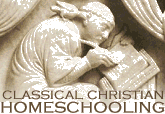Text Only
(Printer-Friendly)
coming soon
Contents
Introduction
Trivium
Grammar
Dialectic
Rhetoric
Homeschool
Curriculum
CCH FAQ
CE Links
Favorite
Reciprocal
What’s New
About CCH
Search CCH
Art History

Classical Christian
Homeschooling:
Classical Education
at Home
WebMaster:
Christine
Miller
CCH’s Online Catalog: 5th Grade History: The American World
This page last revised:
October 2002
Copyright © 1997-2002
|
The American Colonies (17th & 18th
Centuries)
The 17th century saw the colonizing of the Americas by the Spanish, French, Dutch, and
English, and the first of many clashes with the Native Americans which would continue
throughout this century and into the next. These clashes grew into large scale terrorism,
known in American history as the French and Indian Wars, among three nations: the Native
Americans, the French, and the English; each of whom used the others for their own ends.
The spoil going to the victor was control of the continent. When that conflict finally
ended, abuses by the English crown sparked the second major conflict of the century: the
American Revolution.
The American Nation (19th Century)
The new American nation had many challenges to face in not only getting itself taken
seriously by the millenia-old nations of the Old World, but in working out the details of
a new government experiment in a largely unexplored and untamed land, peopled with
fiercely independent and sometimes unruly citizens and hostile indigenous tribes. How she
rose to the challenge further defined her character.
American World Teacher’s
Resources
The American experiment: we have much to be proud of, and much to be ashamed of. It is the
old human story played out on a new stage. While Europeans experienced a degree of
personal freedom unheard of in the history of the Old World, Africans and Native Americans
experienced a degree of submission also unbeknownst to them in previous eras. The struggle
to live out Thomas Jefferson’s inspiring words, based on Biblical truth, that
“all men are created equal,” still goes on today. Biblical truth informed
America’s past; will America survive without Biblical truth informing her future?
These essential resources will help the homeschool parent grasp the big picture.
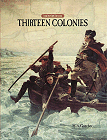 The Story of the Thirteen
Colonies The Story of the Thirteen
Colonies
H. A. Guerber
This wonderful historical narrative about the founding of our country
through the end of the Revolutionary War in 1783 in 84 lessons is the perfect introduction
to American history for 5th graders. Guerber writes histories focusing on the people that
made it, interweaving a generous dose of Biblical worldview throughout. Every bit as
engaging and yet meaty with depth and detail as The
Story of the Greeks and The Story of the
Romans, The Story of the Thirteen Colonies begins with the native inhabitants
of the Americas, continues with Viking exploration of North America, the Age of
Exploration, Columbus' voyages, subsequent Spanish, French, Dutch, and English
explorations and colonizations, and focuses then on the planting and growth of the
thirteen English colonies along the Atlantic seaboard, concluding with the French and
Indian Wars, and the American War for Independence.
 The Vikings The Vikings
Elizabeth Janeway
The Vikings is a reprinted edition from Random House’s
acclaimed Landmark series. “The story of how Eric the Red and his son Leif sailed to
the west and discovered Greenland and the continent of North America is a true story. I
have tried to write a true book about their discoveries, but I want to tell you at once
that not everything that you will read in this book is fact. All the facts that we know
about Eric and Leif and their voyages are here, but in between the facts I have put some
fiction. I did this because the fictional parts of the book tell true things about the way
people lived and acted and felt in Norway and Iceland and Greenland a thousand years
ago.” - author’s foreward. Leif Eriksson discovers North America in ca. 1000.
 John Smith:
Gentleman Adventurer John Smith:
Gentleman Adventurer
C. H. Forbes-Lindsay
From Preston-Speed, the people who republish the G. A. Henty books.
“In this long out of print work ... readers will discover a soldier who is an
unparalleled swordsman, an adventurer who is a man of honor, an administrator who commands
the respect of the common man, an explorer who counsels courteous and fair treatment of
the native Americans, a champion of the right who faces death innumerable times, and
always with equanimity. John Smith is the unsung hero of the Jamestown colony, the man who
often by sheer force of will held together the little settlement, who battled hunger,
disease, and the animosity of those who were jealous of his abilities and who sought his
downfall, even against their own interests. This book reveals the Disney cartoon for the
caricature that it is, and unveils a man who was a hero in his time, so that he can once
again be a hero in ours.”
 The Landing of
the Pilgrims The Landing of
the Pilgrims
James Daugherty
Another excellent Landmark reprint by James Daugherty (he also wrote The Magna Charta for the Landmark series). Part
One tells the story from 1607-1620 of Will Bradford and the Separatists at Scrooby, their
persecution in England, their relocation to Holland, and their decision to emigrate to
America. Part Two continues the story from 1620-1621 of their voyage to the New World
aboard the Mayflower, their exploration and adventures along the coast, their eventual
settlement of Plymouth and their hard first winter there. Part Three concludes the story
from 1621-1623 of the departure of the Mayflower and the dangerous and exciting adventures
in the development of the colony, their encounters and relations with the local Indians,
the arrival of new settlers from England, and finally, what the colony was like twenty
years later in 1648. Excellent.
 The Witchcraft
of Salem Village The Witchcraft
of Salem Village
Shirley Jackson
Stories of magic, superstition, and witchcraft were strictly forbidden in
the little town of Salem Village. But a group of young girls ignored those rules,
spellbound by the tales told by a woman named Tituba. When questioned about their
activities, the terrified girls set off a whirlwind of controversy as they accused
townsperson after townsperson of being witches. Author Shirley Jackson examines in careful
detail this horrifying true story of accusations, trials, and executions that shook a
community to its foundations.
 Colonial
Craftsmen & the Beginnings of American Industry Colonial
Craftsmen & the Beginnings of American Industry
Edwin Tunis
Edwin Tunis has written marvelous books for children illuminating various
periods of American history. In this book, he explains the common occupations and
crafts-work found in colonial America. Part One: New World, New Ways, explores British
Restrictions, Specialists, Status, The Apprentice System, Journeymen, Masters, Quality and
Honesty, and Prices in colonial New England. Part Two: Country Work looks at The
Blacksmith, The Cooper and White Cooper, The Housewright, The Sawyers, The Joiner, The
Miller, The Tanner and Currier, The Fuller, The Itinerants, The Cat Whipper, The Weaver,
The Tailor, The Chandler, and the Tinker. In Part Three: Town Shops, we learn of The
Barber and Wigmaker, The Baker, The Apothecary, The Hatter, The Eyeglass Seller, The
Cutler, The Tobacconist, and the Hornsmith. Part Four: Bespoke Work explores The Town
Blacksmiths, The Locksmith, The Gunsmith, The Whitesmith, The Plumber, The Pewterer, The
Coopersmith, The Silversmith, The Builder, The Cabinetmaker, The Wainwright and the
Coachmaker, The Bookbinder, The Weaver, The Shoemaker, and the Limner. Part Five: Group
Work looks at The Shipwrights, The Chandlers, The Potters, The Block Printers, and the
Letterpress Printers. And in Part Six: Manufactories, we learn of The Papermakers, The
Glass Blowers, The Braziers, The Clockmakers, and The Ironmasters. This is a very nicely
illustrated book on a fascinating subject.
 Struggle for a
Continent Struggle for a
Continent
Albert Marrin
“For over seventy years (1690-1760), France and Great Britain
wrestled for control of North America, pitting the inhabitants of the new world against
one another. Three peoples, the Native American “Indians,” French colonists, and
British colonists, each with their different wants, needs, and customs, clashed repeatedly
until their hatreds exploded in the French and Indian Wars. Colonists allied with
Redcoats, Frenchmen fought side by side with Indians, and Britain and France each used the
Native Americans for their own ends during years of the most horrifyingly cruel warfare
ever waged on the North American continent. In this exciting retelling, Albert Marrin
takes the reader from the terrifying midnight raid at Schenectady to Pontiac’s final
seige at Detroit. Here, too, we meet those who would become heroes of the American
Revolution, including Benjamin Franklin and a young surveyor named George Washington,
testing his courage against the French in the Ohio River Valley. Filled with rich and
gripping detail, Struggle for a Continent brings each stage of the wars into sharp
focus, vividly recreating the years of ruthless fighting that paved the way for another
conflict that began in 1776--the American Revolution.” -Book Jacket. A clear and
fascinating accurate portrayal of the Indians, the French, and the British, and their
relationships from 1690 to 1760.
Out of Print. Search AddAll.com
or BookFinder.com via an author search using
‘marrin’ and a title search using ‘struggle for a continent;’ see locating out of print books.
 Life and
Anecdotes of George Washington for Young Readers Life and
Anecdotes of George Washington for Young Readers
Mary L. Williamson
“Discovering literature suitable for youth which has not given way to
trendy ‘hero-blasting’ but challenges youth by means of setting forth men of
character connected to great causes has become quite difficult. In Mary L.
Williamson’s Life of Washington one finds juvenile biography written the
old-fashioned way. This volume has a pronounced emphasis upon the virtues of a great
American with the implication that such virtues ought to be imitated by youth. Among the
virtues associated with Washington’s life are truthfulness, diligence, courage,
resolution, competence, compassion, humility, prudence, poise, magnanimity, selflessness,
perseverance and sanctified devotion to the good of others.” -Publisher. This volume
brings Washington’s Christian faith to light, and concludes with Washington’s
Rules of Civility and Decent Behavior.
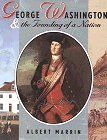 George
Washington and the Founding of a Nation George
Washington and the Founding of a Nation
Albert Marrin
Since Marrin’s exceptional War for Independence is no longer
in print, this combination biography of our country’s greatest president, and
narrative history of the events of his life, including the last French and Indian War, the
War for Independence, as well as the tumultous events following the war and the
establishment of the goverment of the United States of America, will suffice. As a
biography, it is characterized by the same honest yet respectful portrait of a true
American hero that made Marrin’s Commander in Chief an
award-winning account. As a history of the Revolutionary War, it covers all the major
causes, battles, and personal portraits of its most illustrous characters, including
Washington’s British opponents, noteworthy American heroes such as Knox, Allen,
Greene, Morgan, and Light Horse Harry Lee, and noteworthy American scoundrels such as
General Charles Lee and Benedict Arnold. The book is generously illustrated with period
paintings and engravings, and several well-drawn maps help visualize key military
movements. Another excellent biography from the pen of Albert Marrin.
 The American
Revolution The American
Revolution
Bruce Bliven, Jr.
The war started on April 19, 1775, when the minutemen of Lexington and
Concord fired on the British Redcoats from Boston. But in the hearts and minds of the
American people, it was the revolution that was begun, as John Adams said, fifteen years
before a drop of blood was shed. This Landmark book reprint contains the complete story of
both the war and the revolution that covered a quarter of a century from 1760-1783. Along
with the causes and the battlefield narrative of the war, the events are viewed, as they
should be, within the larger framework of European history. Twenty chapters tell about the
Young King that Ends a Great War, Quarrels over Money, Americans Boycott British Goods,
Boston: a Massacre and a Tea Party, the First Continental Congress, Lexington and Concord,
Bunker Hill, the Americans Attack Canada, the Americans Declare Independence, Washington
Crosses the Delaware, Brandywine and Germantown, Saratoga, Valley Forge, Battle of
Monmouth, British Conquer in the South, America’s Most Famous Traitor, King’s
Mountain and Cowpens, Nathaniel Greene, Yorktown, and the War’s End. This volume
provides a bit more detailed look at just the War for Independence. Reading Life of
Washington by Williamson, George Washington by Marrin, and American Revolution by Bliven,
all three, add to building a more complete picture of both Washington and the events of
the war, as each volume adds its unique contribution to the big picture.
G. A. Henty’s Colonial
Era Historical Fiction:
By Right
of Conquest, or With Cortez in Mexico (1595) paperback
edition
With
Wolfe in Canada, or the Winning of a Continent (1759) paperback
edition
 The
Story of the Great Republic The
Story of the Great Republic
H. A. Guerber
This wonderful children’s historical narrative about the beginning of
the United States after the War for Independence (1783) through Roosevelt’s
administration at the turn of the century in 77 lessons is the perfect continuation of
American history for 5th graders. Guerber writes histories focusing on the people that
made it, interweaving a generous dose of Biblical worldview throughout. Every bit as
engaging and yet meaty with depth and detail as The
Story of the Greeks, The Story of the Romans,
and The Story of the Thirteen Colonies, The Story of
the Great Republic begins with the story of the treaty of Paris and Franklin's
homecoming, through the troubles leading to the Constitutional Convention, the adoption of
the Constitution, Washington's presidency, and the subsequent presidents of our country,
each in their turn, as well as Lewis and Clark's expedition, westward expansion, the
Mexican War, the Civil War, southern reconstruction, the Spanish-American War, and all the
advancements made by American ingenuity and industry since its birth.
 The U.S.
Constitution for Everyone The U.S.
Constitution for Everyone
Mort Gerberg
This slim book presents the text of the Constitution, explains its
fundamentals, and traces the events leading up to its adoption in 1788. It is a clear,
easy-to-read introduction to America’s founding document. A page of the
Constitution’s actual text faces a page of explanation and information in such a way
that both young and old can develop a clear understanding of the Constitution. It also
includes the text of all 27 Constitutional amendments.
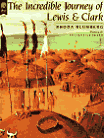 The Incredible
Journey of Lewis and Clark The Incredible
Journey of Lewis and Clark
Rhoda Blumberg
In 1804, the land west of the Mississippi was a vast mystery, thought to
be full of monsters and giants. Thomas Jefferson had just acquired the vast Louisiana
Territory from Napoleon (see Blumberg's wonderful What's the Deal), who needed some quick
cash to finance his war in Europe. The Louisiana Territory included all the land west of
the Mississippi drained by that great river and her tributaries. No one had ever explored
the whole area before, something that the third president was keen on rectifying. He chose
Meriwether Lewis and William Clark to head the dangerous and rugged expedition. While they
didn’t find giants, their odyssey of scientific discovery is unequaled in American
history. Lavishly illustrated, Rhoda Blumberg uses excerpts from their journals and other
historical information to recreate this most exciting of American journeys for her
readers. An ALA Notable Book; School Library Journal Best Book of the Year; and Golden
Kite Award book.
 1812: The War
Nobody Won 1812: The War
Nobody Won
Albert Marrin
Britain relunctantly gave up possession of the colonies in the United
States after the Treaty of Paris was signed in 1783. That didn’t change the feeling
that the American colonies, and American citizens, still belonged to Britain. Taking
advantage of the years of instability while the new goverment was being framed and put
into effect, Britain increasingly provoked America in various ways. The straw that broke
the camel’s back was her unceasing impressment of American seamen in the cruel and
inhumane British Royal Navy. As soon as the new country could build up enough of a navy to
oppose the Queen of the Seas, war was declared. This is the story of that conflict: what
led up to it, what happened, who the players were, and what were the consequences. During
the course of the war, the British army marched on Washington and burned it to the
ground--Mrs. Dolly Madison, the First Lady, barely escaped capture as she saw to the
safety of our national documents and the famous portrait of George Washington, which she
refused to leave behind; and Francis Scott Key, imprisoned on a British ship, wrote the
Star-Spangled Banner.
 Mill Mill
David Macaulay
“In Mill, a School Library Journal Best Book of the Year,
David Macaulay pays tribute to the historically important mills of 19th-century New
England. Using close-up pen-and-ink illustrations, Macaulay thoroughly explains the Yankee
ingenuity that went into the elaborate process of running machines that were generated by
the flow of water. In the case of this cotton mill in the imaginary town of Wicksbridge,
Macaulay also demonstrates how important the mill was to a community’s economic and
social viability. Macaulay tracks the mill’s history, expertly explaining how all its
new fixtures and materials reflect the political and industrial changes in the country.
For example, in 1852 the owner sides with his abolitionist wife and shuns the use of
“Negro cloth,” inexpensive cloth made from slave-picked cotton. Instead he
decides to start producing multi-colored, finer fabrics--a decision that leads to the
expansion of the mill and the introduction of the steam engine. This finely woven tale is
filled with technical intricacies and intriguing historical details. But ultimately, Mill
is generated by the human story that led to the building of New England’s cotton
mills--as well as their eventual demise.”
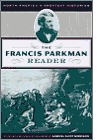 The Francis
Parkman Reader The Francis
Parkman Reader
Francis Parkman, Samuel Eliot Morison, editor
Francis Parkman was the greatest American historian of the 19th century.
His acclaimed account of the Conspiracy of Pontiac was an Everyman’s Library staple,
and his narratives of the history of the Oregon Trail were required reading by 19th
century schoolchildren in this country, who eagerly devoured them. Parkman’s
histories read like novels, only every phrase, every description, is an exact recording of
the events he eye-witnessed or painstakingly pulled together from source material. Sir
Arthur Conan Doyle once said to a companion, “By the way, talking of history, have
you read Parkman’s works? He was, I think, among the greatest of the historians, and
yet one seldom hears his name.” The more famous American historian of the 19th
century, John Fiske, while lecturing at University College in England on
“America’s Place in History,” found enthusiastic agreement among his
hearers when mentioning Irving, Bancroft, Ticknor, Prescott, Kirk, and Motley, but when
speaking of Francis Parkman his remarks were received with bewilderment. (Parkman just
happened to be in the audience that day, unbeknown to Fiske.) The best works of this
outstanding but forgotten historian are happily in print again in The Francis Parkman
Reader.
 The California
Gold Rush The California
Gold Rush
May McNeer
On January 24, 1848, James Marshall discovered a small nugget of gold in a
stream near Sutter’s Mill, California. Though he tried to keep it a secret, word
spread through the country like wildfire. Before the year was out, the great American gold
rush had begun. This true-life adventure story recreates the days when young and old went
west with pick and shovel in the hope of finding riches. While true to the factual
accounts of the California gold fields, the text is lively and filled with details on the
lives of the ordinary yet fascinating people, colorful anecdotes of life in the mining
camps, and more. Another excellent Random House Landmark reprint.
 Daily Life on a
Southern Plantation Daily Life on a
Southern Plantation
Paul Erickson
In this handsome book, you will meet the Hendersons, who live on a
Southern plantation with their children in 1853. You’ll also meet Daddy Major,
Rosena, Scipio, and Cicero, slaves who work in the Big House and in the cotton fields.
Full-color photographs of interiors, clothing, and objects, plus artwork and oral history,
document a typical day on a plantation. You will see the stately bedrooms and dining room
of the plantation house, as well as the simple slave quarters and cabins. Inside the Big
House, morning chores are done and the children readied for school (or play); in the
kitchen house, food is cooked and bread is baked; and in the sugar house, cane is crushed.
Readers will learn about mealtimes, leisure hours, doctors and disease, and bedtimes.
You’ll also learn about attitudes toward slavery, slave meetings in the woods, and
much more in this unique visit to a restored Southern plantation in New Iberia, Louisiana.
 Commander in
Chief: Abraham Lincoln and the Civil War Commander in
Chief: Abraham Lincoln and the Civil War
Albert Marrin
Although this is a biography of Lincoln and a history of the Civil War, it
is much more than either of those. It is a portrait of Lincoln that makes our sixteenth
president accessible to young readers as a human being, rather than as a historic icon or
paragon of virtue. The author, renowned for his award-winning books on great leaders,
shows how a principled but imperfect man -- full of intelligence but also of sorrow,
logical and determined, but also cautious and prejudiced, grew under the pressure of
personal tragedy and national crisis to become our greatest president. The book is written
in a quick-flowing, engaging style, detailed but easy to read. The author effortlessly
uses eyewitness accounts--letters, speeches, diaries, newspapers, poems, songs,
memoirs--to create setting, to show personality, political climate, to give voice to the
attitudes and hopes of everyday Americans. The treatment of slavery is especially vivid.
All the important events of the war are here, but the emphasis is on people,
personalities, human feelings and behavior, resulting in another excellent Marrin history.
 Albert
Marrin’s American Era Histories Albert
Marrin’s American Era Histories
Albert Marrin
Albert Marrin, chairman of the history department at Yeshiva University,
has written a number of excellent histories and biographies for children and young adults,
spiced with extensively footnoted primary sources and illustrations from authentic
historical media. Marrin has that rare quality that distinguishes great historians from
good ones: objectivity and moral strength, and the ability to convey accurate historical
research with literary style and high-level interest. Virginia’s
General: Robert E. Lee and the Civil War retells the story of the conflict from the
southern viewpoint, painting a vivid portrait of the great general and American hero. In Unconditional
Surrender: U. S. Grant and the Civil War, he does the same with General Grant as his
subject. Reading all three books on Lincoln, Lee, and Grant give a thorough overview of
not only the history of the Civil War, but what the conflict was about from both the
Northern and Southern viewpoint. Empires Lost and
Won: The Spanish Heritage in the Southwest, is a “vivid narrative ... across
three centuries of struggle for control of the American Southwest. ... from the cruel
conquistadors to ... the battles between the U.S. and Mexico’s General Santa Anna ...
a welcome improvement over dry textbook accounts of the Alamo and the Mexican War.”
The Mexican War was fought prior to the Civil War. Cowboys,
Indians, and Gunfighters: the Story of the Cattle Kingdom discusses the history of the
North American West from the arrival of the first cattle from Spain in 1521, and includes
the battle for Texas’ independence, and the stories of such famous Westerners as
Wyatt Earp, Wild Bill Hickock, and others.
G. A. Henty’s American
Era Historical Fiction:
With Lee
in Virginia, A Story of the American Civil War (1860s) paperback
edition
In the
Heart of the Rockies, A Story of Adventure in Colorado (1860)
A Tale of
the Western Plains (1880’s)
American Literature:
The Last of the Mohicans by James
Fenimore Cooper (French and Indian War)
The Complete Tales of Washington Irving
(colonial New York)
Henry Wadsworth Longfellow: Selected Poems
edited by Laurence Buell
American Tall Tales by Adrien
Stoutenburg (19th century folk tales)
The Complete Tales of Uncle Remus by Joel
Chandler Harris (antebellum South)
and Adventures of Tom Sawyer by Mark Twain
(antebellum South), from 5th Grade Literature
selections
This online catalog is made possible through an association with Amazon.com.
Clicking on the book cover will take you to Amazon’s information page about that
book. You can look at its price, availability, any discounts currently taken for that
title, reviews of the book, and other information, as well as order it if you decide to
purchase the book. You can even place books in your shopping cart and save them for
purchase at a later time. You can continue to add or delete books from your shopping cart
until you are satisfied with your order and ready to purchase. Clicking on your
browser’s “Back” button will bring you back to this catalog.
Locating Out of Print Books
Sometimes books go out of print, or the publisher runs out of stock. Any book not
available from Amazon.com for any reason can be searched using AddAll.com, a book shopping site which will scan Amazon
as well as Barnes and Noble, Powell’s Books, Book Close Outs and many other new and
used book sites. Be sure to also check BookFinder.com
for out of print book searches.
If all else fails, and you cannot find a book you need, check it out from
the library, or request it from your library through interlibrary loan. Once you have the
book home, take it to a copy store and copy it. You can even have color copies done of key
maps or photographs. Copy stores can now do nice bindings on your copy projects. The copyright law allows copying of out of print
(not in print) works to be used for educational purposes. Then return the book to the
library, and you have your own book to keep, usually for less than it would be from a
collector’s book shop.
Still have questions? Ask
me!
 
|
